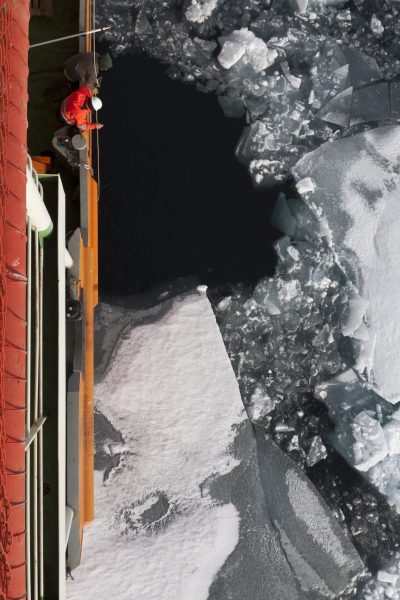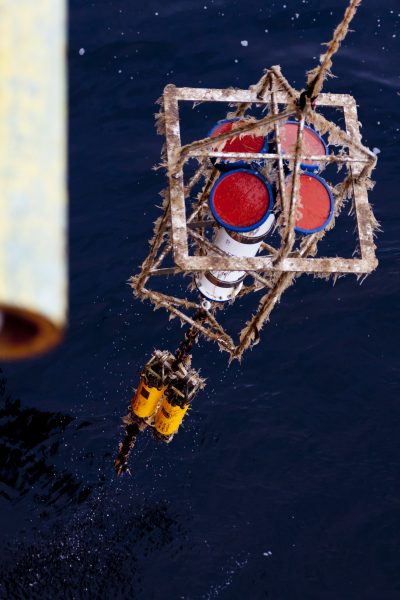Study: Warm Atlantic waters contribute to sea ice decline
April 7, 2017
Nate Bauer
907-474-7413

A University of Alaska Fairbanks study has determined that warmer water migrating from the Atlantic Ocean is a surprisingly powerful contributor to Arctic sea ice decline.
Research led by Igor Polyakov, a professor at UAF’s International Arctic Research Center and College of Natural Science and Mathematics, has found that Atlantic currents contribute to sea ice loss in the Arctic Ocean at a rate comparable to warming air temperatures.
“This is a very important step toward a seasonal ice-free Arctic,” said Polyakov.
The findings, outlined in the journal Science's April 6 edition, provide a greater understanding of the complex dynamics that contribute to sea ice melt. Co-authors of the paper include UAF’s Andrey Pnyushkov, Robert Rember, Till Baumann and Vladimir Ivanov, as well as collaborators from Russia, Canada, Poland, Germany, Norway and the United States.
The Arctic Ocean has experienced dramatic reductions in sea ice in the past decade. The Eastern Eurasian Basin has had almost no ice by the end of each summer since 2011. Circulating Atlantic waters have been considered a small factor in that decline, due to a phenomenon known as stratification.

In the Arctic, warmer and denser water from the Atlantic has normally remained beneath a colder and lighter surface layer. The greater the difference in density between the layers, the less likely they are to mix. Without mixing, the heat from the warmer water can’t come into contact with sea ice at the surface.
That has changed. Data collected by Polyakov and other researchers during the Nansen and Amundsen Basins Observational System project showed increased mixing in the Eastern Eurasian Basin, a major pathway for Atlantic water into the Arctic Ocean. That means more heat is being transferred to the Arctic sea ice on the surface.
Even before analyzing the data, the research team noticed that something was changing. They depend on solid sea ice to deploy their research buoys. During the 2015 expedition aboard the icebreaking research vessel Akademik Tryoshnikov, much of the sea ice was too rotten to support the buoys, Polyakov said. “For the first time, we had a problem finding a suitable ice floe to deploy buoys. We spent several days trying to find such a floe.”
NABOS sends comprehensive research cruises through the Arctic Ocean every two years. The NABOS project is currently planning its 2017 research cruise.
ADDITIONAL CONTACTS: Igor Polyakov, ivpolyakov@alaska.edu, 907-474-2686; Eddy Carmack, with Fisheries and Oceans Canada's Institute of Ocean Sciences, eddy.carmack@gmail.com; Jeff Richardson, UAF University Relations, 907-474-6284, jarichardson6@alaska.edu


